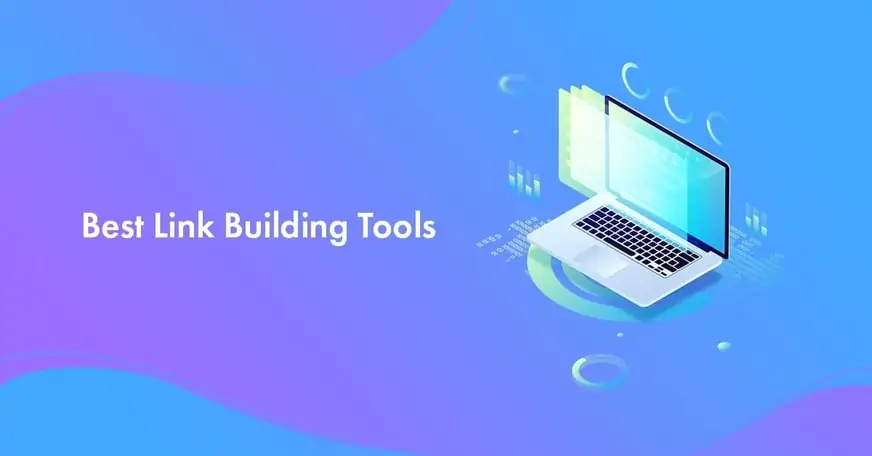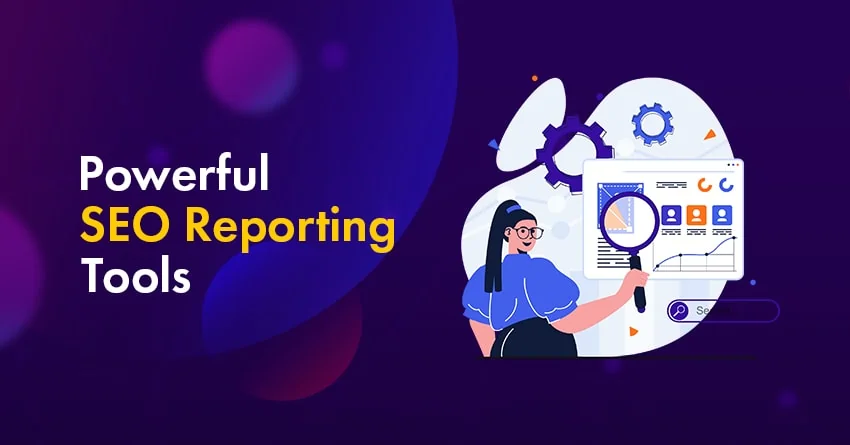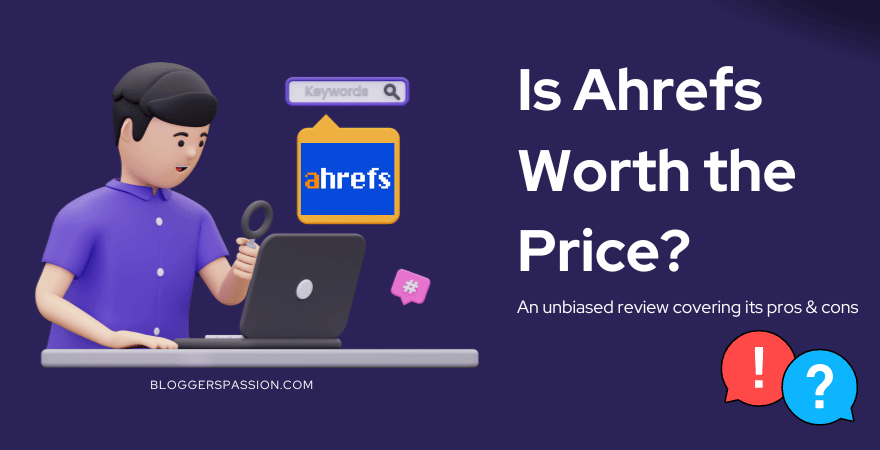Did you know that over 90% of enterprise brands intend to focus on SEO in 2023.
No matter how many AI tools come, SEO is here to stay.
Why? Because 93% of ALL online experiences start with a search engine. SEO gives an amazing conversion rate of 2.4%. That means if 100 people visit your website, at least two will take action.
So if you’re planning to make SEO a top priority in 2023, this free guide is for you where you’ll discover;
- What is enterprise SEO and its benefits
- Tips that work effectively for enterprise and large websites and much more
Are you ready? Let’s jump into the details.
Table of Contents
What is Enterprise SEO?
Enterprise SEO is the process of helping people find your enterprise (or large) website when they search for something online.
Simply put, enterprise SEO is done for BIG websites with many pages indexed in search results.
The best example of an enterprise website is HubSpot.com.
Have a look at its indexed pages on Google;

See that? HubSpot has nearly 350,000 pages indexed in Google searches, which is a LOT of pages.
So… it can be considered an enterprise website.
Let’s take the same example of HubSpot.
According to Semrush data, HubSpot gets nearly 18 million monthly visits from organic searches.
Have a look;
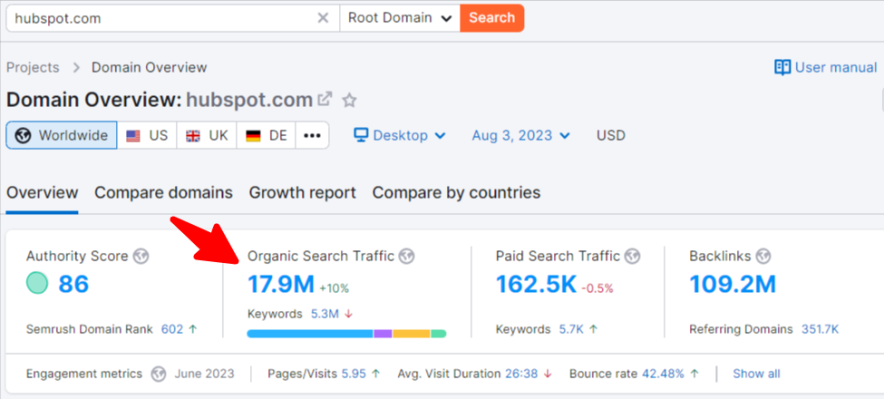
HubSpot is the BEST example of how enterprise SEO should be done.
There are a TON of things that go into making your site ready for enterprise SEO, including;
- Making sure your website is easy to use and navigate
- Making it faster for mobile users
- Creating highly informative content for your target audience
- Optimizing your website for the right keywords
- Building many backlinks from authority websites and trusted sources, and the list goes on.
Why should we even care about enterprise SEO for larger websites and organizations?
If enterprise SEO is done correctly, your website will appear higher in the search engines like Google, meaning more people will visit it. It ultimately helps you with more organic visibility, conversions, leads, and sales.
How to Do Enterprise SEO: 5 Best Enterprise SEO Practices for 2023
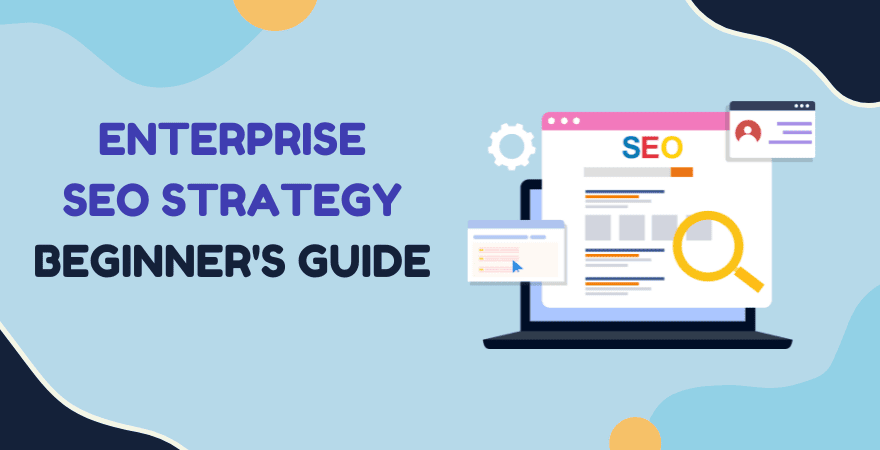
If you want to increase search traffic to your enterprise website, here are some proven tips you can follow.
1. Content scaling
Almost every single enterprise website depends hugely on “content scaling”.
Content scaling is the process of creating a TON of content on a regular basis without compromising on the QUALITY.
High-quality content scaling is the #1 reason enterprise websites like HubSpot are so successful. They create thousands of FREE guides that are MOSTLY top-notch.
Creating lots of quality content is a HUGE task. That’s why most enterprise brands outsource their content or hire a team of content marketing experts.
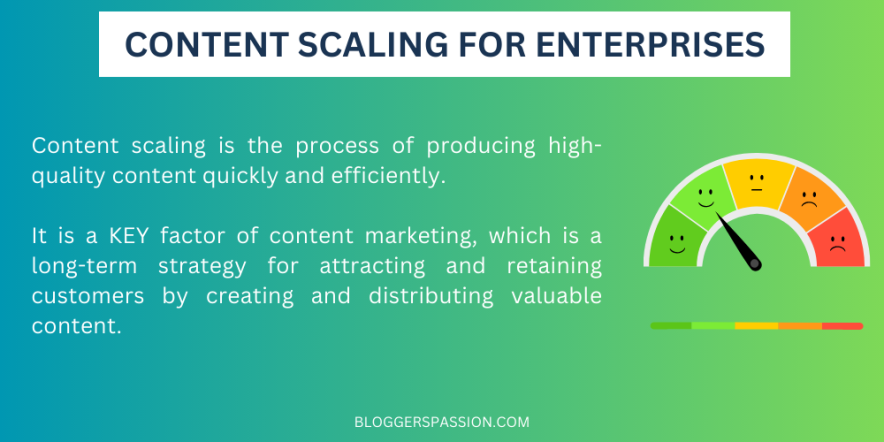
If you’re an enterprise website looking to grow search traffic, here are a few things you must remember.
Start with a solid content strategy: Before creating content for your large website, you need to know your target audience. Find out their needs and identify topics they’re looking for. You must also create a content calendar to schedule all your posts and topics in advance.
Create high-quality content: No matter your industry, you need 10x content to succeed online. Your content should be HIGHLY informative, well-written, and engaging to your audience. Also, make sure the content is optimized correctly for search engines like Google.
Promote your content: Promoting your content is a MUST. You can use email lists, social media, repurposing content, etc. to promote your content. You can also try paid strategies like PPC ads, Quora ads, Google ads, etc if you’re looking for faster results.
Measure your results: Creating great content regularly is NOT enough. Why? There’s a huge competition for almost every industry. That’s why you need to track the results of your content marketing efforts to see what is working and what is not.
Some of the tools you can to measure your results are;
- Google Analytics
- Google Search Console
- Semrush
2. Keyword research with a plan
The entire point of enterprise SEO is to publish a ton of content and rank for thousands of keywords.
But here’s the thing: if you’re NOT careful with keyword research, it can lead to “keyword cannibalization.”
Keyword cannibalization is a HUGE SEO issue that occurs when various pages on your website rank for the SAME keyword or search query.
That’s why you should conduct keyword research with a plan.
You need a dedicated team to manage your keyword research process. The BIGGEST issue with most large websites is that they publish a lot of content and soon be out of new keywords to target.
Here’s where “content gap analysis” comes into handy.
Content gap analysis is the process of finding holes in your existing content. In other words, you’ll identify missed opportunities in your content strategy.
You can do it in multiple ways, including;
- Looking at your website and identifying what topics you’re not covering
- Spying on your competitors’ websites and finding what topics they’re covering that you’re not.
One of the best tools for content gap analysis is Semrush.
Semrush is the #1 SEO toolkit used by over 10 million users worldwide. You can use Semrush to easily discover which keywords your competitors are ranking for that you are not.
Here’s a quick tutorial on using Semrush to find missing content opportunities.
Firstly, you need to identify which all keywords your competitors rank for, but you do not.
For that, you can use the Semrush Organic Research tool.
Simply enter your website’s URL in the tool.
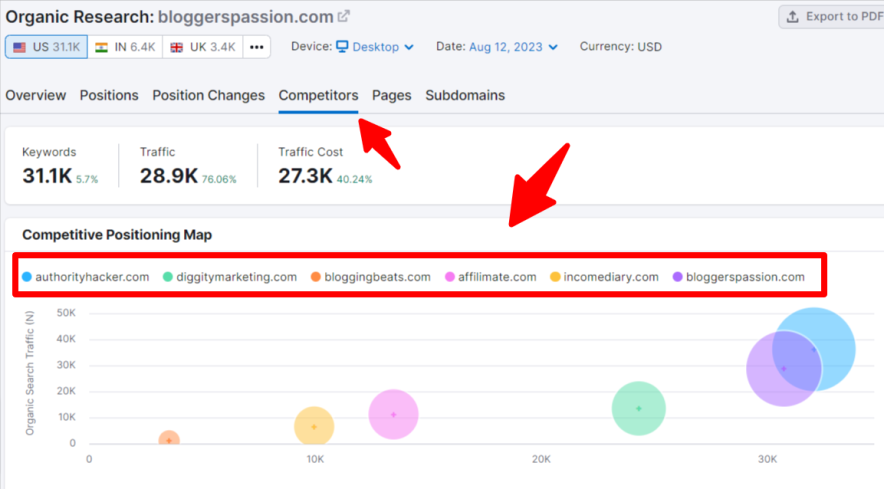
As you can see, the tool will instantly show you a list of competitors with the most common keywords.
When you scroll down a bit, you’ll see a list of all the keywords they’re currently ranking for (including common ones).
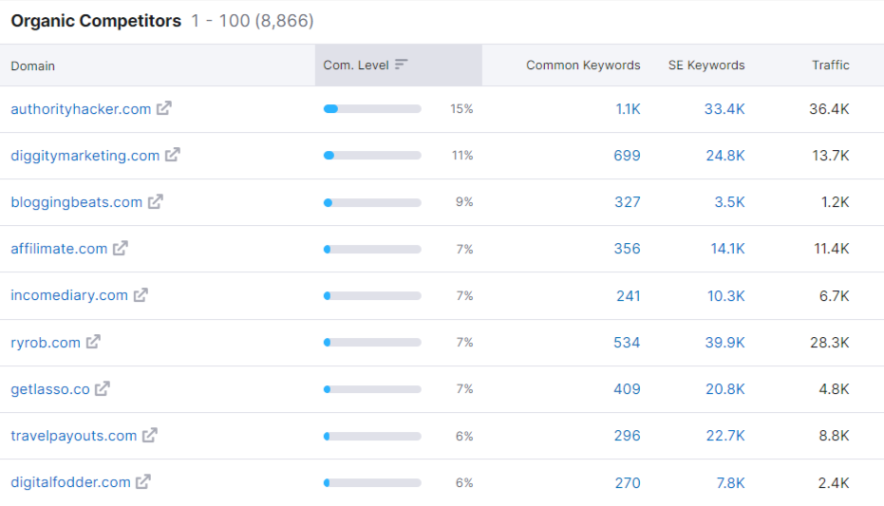
The above step helps you find a list of ALL the competitors in your industry. You can click on the SE keywords (you can see above) to easily discover their high-traffic keywords.
The next step is to use “Keyword Gap” tool from Semrush which helps you find missing keywords.
Here’s what it looks like;
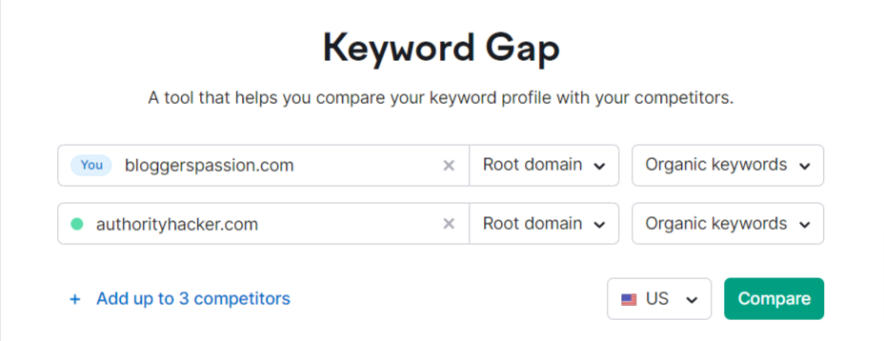
As you can see, you should enter your website along with your competitors’ domains and click on the compare button to find missing keywords.
Here’s what it looks like;
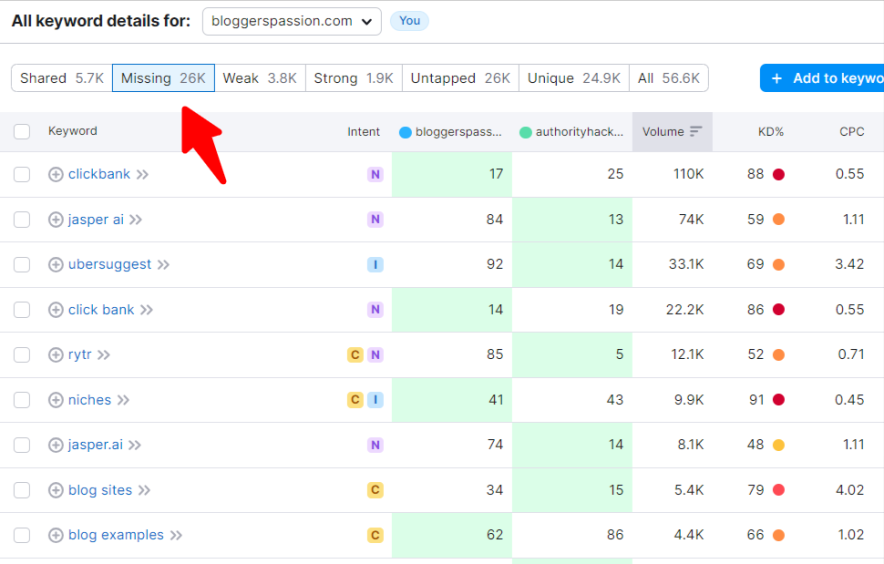
See that? You can quickly compare their rankings to your website to determine what they rank for that you do not.
All in all, Semrush is an essential tool that EVERY enterprise website needs. So how much does Semrush cost?
Semrush offers the following pricing packages.
- Pro plan costs $119.95 per month, where you can add up to 5 projects, 500 keywords to track, and 10,000 results per report.
- Guru plan costs $229.95 per month, where you can add up to 15 projects, 1500 keywords to track, and 30,000 results per report.
- Business plan costs $449.95 per month, where you can add up to 40 projects, 5000 keywords to track, and 50,000 results per report.
If you want to try it out for free, use the following link to grab its 14-day free trial.
Quick note: We recommend their “Business” plan for enterprise websites, as it offers plenty of advanced features with huge crawl limits.
3. Focus on user experience
If there’s only one thing you can do to improve your search rankings, focus on users.
Give the BEST experience to your website users and Google will reward you. The enterprise websites that focus heavily on user experience (sites like HubSpot, Semrush, etc.) often get a ton of traffic from search engines like Google.
There are a few things you can focus on to improve the overall user experience on your site.
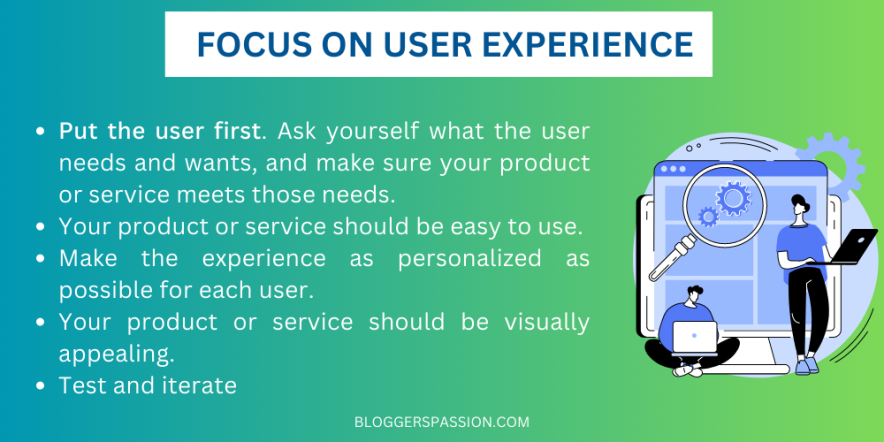
Improve page speed: Nobody likes a slow-loading website. If your website pages take more than 2 to 3 seconds to load, you need to optimize them for speed.
You can do certain things on your site to improve the overall page speed, which are listed below.
- Use a CDN (Content Delivery Network) which delivers your website’s content to users from the server that is closest to them (it ultimately helps with faster page load times)
- Minify your HTML, CSS, and JavaScript files
- Always lazy load your images. Lazy loading images only load them when they’re visible on the screen. You can use plugins like WP Rocket to enable lazy loading on images.
- Use a caching plugin like WP Rocket. It stores static files on your website, such as HTML, CSS and helps with faster loading times.
- Move to faster web hosting. Try using VPS servers or dedicated servers, as they offer superior page loading times. We recommend you Kinsta or WPX.
Optimize for mobile: Millions of people now use their smartphones to access the internet and browse websites.
If your web pages load poorly on mobiles, you must fix them immediately. That way, your website users can easily view it on their devices. Otherwise, you’ll lose a ton of traffic, leads, and money to your competitors whose pages are mobile-friendly.
Make it easy to use: Last but not least: your enterprise or large website should be easy to navigate and use, even for first-time visitors.
Use proper menus, search bar, and navigation to make ALL your website pages easily accessible to your users. Use white space smartly if you’re using a blog within your site. White space can help to make your content more readable and visually appealing.
You can analyze the blog pages from enterprise websites like Adobe, HubSpot, Semrush, etc to find out how they use white space.
4. Rank for Featured Snippets
The thing about enterprise websites is that you often create lots of content.
The best way to take advantage of lots of content is to rank for featured snippets.
Here’s an example of a featured snippet.
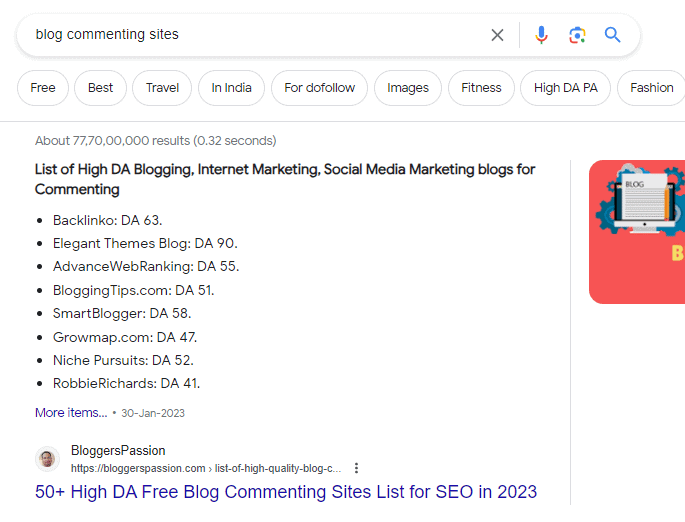
As you can see above, a featured snippet is a special search result that appears at the top of Google’s search results page.
They’re helpful to enterprise sites because they provide a brief and INSTANT answer to a searcher’s query.
Also, a featured snippet gets approximately 8% of all clicks, so you’ll get a better organic CTR to your website.
Another big reason to rank for those snippets is that if Google sees that your site is constantly ranking in featured snippets, it will consider that your website is a high-quality resource. It ultimately helps you with better search traffic in the long run.
Here are some quick tips to rank for featured snippets.
- Find questions your target audience is looking for. Then, create content that is relevant to popular search queries. You can use tools like AlsoAsked.com, Answer The Public, etc. to find question keywords.
- Use an FAQ section to find relevant keywords and phrases to include in your content.
- Try to answer the searcher’s query in under 100 words.
- Use headings and subheadings to break up your content.
- Include numbered lists and tables in your content
If you’re looking for more tips, check out our free guide on getting Google featured snippets for your site.
5. Technical SEO is key
When you’re managing an enterprise website, you’ll need to deal with a lot of technical issues such as;
- 404 pages
- Redirects
- Crawling issues
- Duplicate pages
- Pages without any internal links
- Orphaned pages and many more
Finding and fixing all your technical issues is the proven way to boost your organic rankings. You may need a team to manage all the technical issues of your website.
You also need powerful tools like Semrush to deal with your enterprise website’s technical issues properly. In case you’re curious, Semrush offers a tool called “Site Audits,” which scans your site for over 130 common website issues.
You can easily find and fix technical issues like internal linking, speed, HTTPS, and international SEO issues.
Here’s what the site audit report looks like;
As you can see, Semrush site audit crawls your entire site and gives you a site health score out of 100. You’ll find many things like;
- Website errors
- Site performance issues
- Internal linking issues and more
Here are some of the most common technical SEO issues that you should fix using tools like Semrush:
- Crawl errors (you need to fix these first because iIf search engines can’t crawl your website properly, they won’t be able to index it)
- Slow page speed issues (as they can hurt your search rankings and website user experience)
- Mobile optimization issues
- HTTPS issues (as Google now favors HTTPS-secured websites)
Also, check for toxic backlinks pointing to your website. You can use this free tutorial on how to remove bad links from your enterprise website.
FAQs on SEO for enterprise
Here are some FAQs people often ask about enterprise SEO.
SEO is the process of improving the organic visibility of ANY site (including smaller sites). In contrast, enterprise SEO refers to optimizing big websites to improve their visibility in search engines like Google.
The benefits of enterprise SEO are;
– Improved search rankings and traffic
– Higher conversions
– More leads and sales
– Improved brand visibility and organic growth
The best way to succeed in enterprise SEO is to identify your target audience’s problems and create content (and products) that solve their problems.
Here are a few enterprise SEO metrics you can track;
– Overall website backlinks
– Overall search traffic
– Conversions and sales from your website
Technical, content and off-page SEO tactics like link building are the three most important factors that define your success in enterprise SEO.
Here are some of the top enterprise SEO tools you can use to grow your search traffic in 2023.
– Semrush (#1 SEO tool used by 10 million users)
– ScreamingFrog (for technical audits, website analysis)
– Jasper AI (for content creation with AI tools)
Related Posts:
- 11 Types of SEO: What They Are & How to Use Them
- What is Organic SEO? Everything You Need to Know
- 6 SEO Trends to Know to Boost Your Rankings
- 7 Best SEO Metrics to Track as A Website Owner
- Homepage SEO 2023: A Complete Guide
- Topical Authority SEO: How to Use It to Outrank Your Competitors
- Parasite SEO: A Complete Guide for Beginners
Final thoughts on enterprise SEO solutions
Enterprise SEO is definitely a challenging task, but it is absolutely essential for any enterprise website that wants to grow its search traffic.
Fortunately, there are many tools out there, such as Semrush, that can make the whole thing much easier.
What do you think about enterprise search engine optimization? Did you find this guide helpful? If you’ve any more questions, let us know in the comments.
